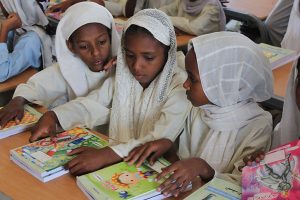The World Day Against Trafficking in Persons, held on the 30th of July recognizes the fact that both human trafficking and slavery are not mere relics of the past, but continue to make up an established and flourishing illicit international business. Indeed human trafficking is now the world’s fastest growing criminal industry. The International Labour Organisation (ILO) estimates that forced labour generates an annual revenue of around $US150 billion.
The United Nations Protocol to Prevent, Suppress and Punish Trafficking in Persons, Especially Women and Children (‘The Palermo Protocol’) of the year 2000, to which Australia is a signatory, provides a definition of human trafficking which includes ‘the taking, harbouring or transferring of persons, by some form of coercion (including fraud, abduction threat or actual use of force), for the purpose of exploitation’. That exploitation includes forced labour and slavery-like practices.
Given the hidden nature of this type of crime and the low level of reporting, estimates of those implicated in forced labour have been difficult to definitively ascertain. In 2012 the ILO reported that 21 million people worldwide were subject to forced labour including sexual exploitation. More recently, the 2016 Global Slavery Index (GSI) estimated that 45.8million people are involved in some form of modern slavery. Furthermore, these studies show that no country is immune from the impact of slavery, and the GSI indicated that even in Australia, 4,300 people are likely victims. Since 2004 there have been 18 criminal convictions in our country for human trafficking and slavery offences.
Whatever the exact figure, the very fact that human trafficking and slavery still widely occurs in the modern era is a shocking realization for many. The problem is compounded by its complex transnational nature, and its multifaceted implications; on human rights and freedoms, on violence against children and women, on business social responsibility and supply chains, and on overall economic development. There is no doubt that human traffickers prey on the most vulnerable, on the impoverished, the powerless and voiceless. This grim reality critically informs all efforts aimed at addressing the root causes of modern slavery.
Of particular relevance is the migrations crisis of recent years, which has resulted in record rates of human movement and enabled traffickers to take advantage of vulnerable groups, especially children, caught up in the situation. As a concerning statistic, a recent European Commission report found that of the 96,000 unaccompanied children that registered to claim asylum in Europe in 2015, approximately 10,000 have since completely dropped off the radar.
With this in mind, it is good to know that the anti-trafficking movement is continuing to grow through multilateral collaboration, regional initiatives, and domestic action plans. The Palermo Protocol supplements the existing U.N. Convention Against Transnational Organized Crime. In addition to forming an agreed definition of human trafficking, the Protocol encourages a convergence in national strategies and challenges states to address the underlying situations that makes people vulnerable to human trafficking. The Sustainable Development Goals similarly support the movement, with the sub-targets within Goals 5, 6 and 8 specifically mentioning human trafficking.
International work has also been complemented by regional and domestic efforts. Given that the GSI estimates that two-thirds of forced labour occurs in the Asia-Pacific, Australia has collaborated with its neighbours through various initiatives such as the Bali Process on People Smuggling, Trafficking in Persons and Related Transnational Crime, and through targeted projects in its aid program. At a national level, trafficking and forced labour is criminalized under domestic legislation, while Australia’s National Action Plan to Combat Human Trafficking and Slavery 2015-19, provides a more targeted framework to anti-trafficking. The action plan adopts a victim-centered approach to reduce wrongful prosecution and unnecessary victimization.
More can be done, and many in the field suggest that education is key to anti-trafficking prevention efforts. On the demand side, many people unwittingly contribute to human trafficking and forced labour and are unaware of its existence, dangers and impact. On the supply side, many victims are unaware of their rights and the services available to help them. In addition to public awareness campaigns, reporting by international media can, and has, made a significant difference.
It’s an ongoing tragedy that a World Day Against Trafficking in Persons is necessary in our 21st century. The day’s existence has helped to increase an understanding of how people become vulnerable to human trafficking and opened discussion on how to remedy the problem. The U.S. Department of State’s 2016 Trafficking in Persons Report poignantly summarized it, ‘Should the day ever come when human trafficking ceases to exist, it will not be because traffickers have stopped trying to take advantage of vulnerable individuals. Instead, it will be the culmination of efforts from a global community that refuses to allow it to continue.’ Let’s work together to make this vision a reality.
– Matthew Kronborg
